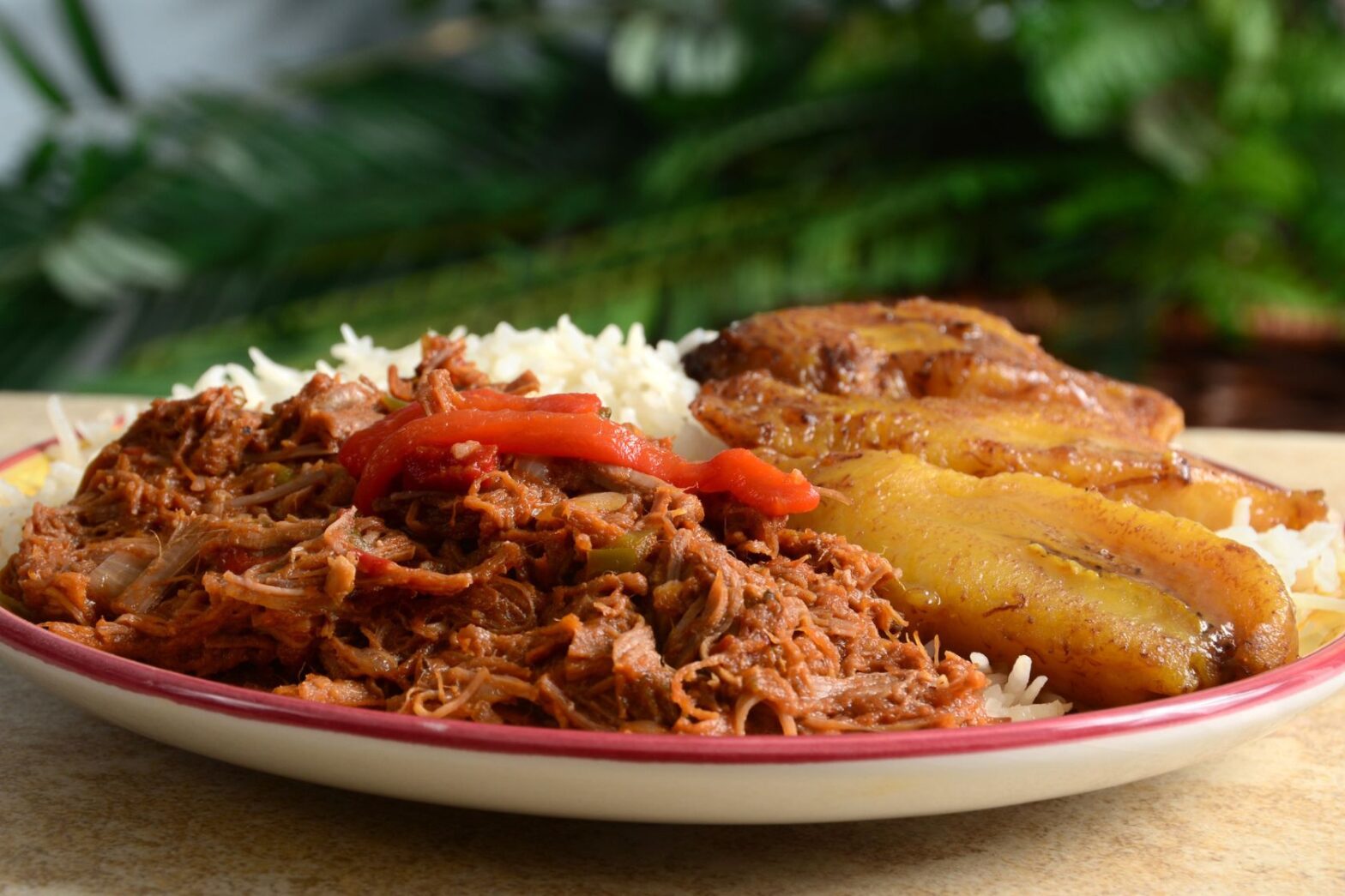If you understand Spanish, the name ropa vieja is a strange name for a meal. It translates to “old clothes,” and there’s a story behind this dish, which is enjoyed by Cubans everywhere.
As the story goes, a destitute old man shredded his clothes in order to feed himself and his family. The Latin Post explains, “The man prayed while the clothes simmered away and it was turned into a slice of meat and vegetables. It was said that the food cured his hungry family. Even though the story is so fantastic to believe but the legend only means that the dish represents a man who supports his family.”
Devotion to family is one of the many staples in Cuban culture. It makes sense that this same devotion extends to food. As is often the case in just about every Spanish-speaking country, eating is much more than just a necessity to survive. It’s a way for family and friends to bond.
Like La Bandera, the signature dish of the Dominican Republic, ropa vieja consists of humble ingredients. Here’s a history of this iconic dish that is embraced in Cuba, though it technically isn’t Cuban.
What Are The Origins of Ropa Vieja?
This dish has a sizeable following across Latin America as well as the Canary Islands, where it was popularized. However, the dish originates in Spain.
Revolucion de Cuba reports, “The recipe for ropa vieja is over 500 years old and originated with the Sephardic Jews in the Iberian peninsula of Spain. Because cooking was not allowed on the Sabbath, the Sephardi would slow-cook a hearty stew the night before.”
Over time, the dish made its way to the Americas. The beef has the appearance of shredded clothes, which explains the name. In Cuba, it’s typically paired with rice and beans. In the Canary Islands, it’s paired with chickpeas.
Preparation Is A Labor of Love
Cooking the meat is a labor-intensive process, but it’s very rewarding when it’s done right. One chef, Luis Gonzalez Castro, explained his process to Olive Magazine:
“Traditionally this dish is made the night before so the juices really seep into the beef. I usually cook this towards the end of the night, leaving it in its juices (don’t reduce the sauce and liquid at this stage, as you want the beef to keep its moisture). I cover the pan with foil and cover it with a lid. When you are ready to serve, remove the foil and lid, and put the pan on low heat for about an hour before you want to serve it. This is a slow process but well worth it. It’s a labor of love.”
Whether you’re in Cuba, or at a Cuban restaurant, this delicious meal will leave to satisfied, not to mention full.





